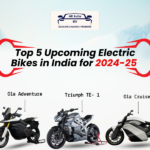
India Competes with China in Underwater Mineral Exploration for EVs and Solar Panels
Mineral resources are essential for the production of solar panels and electric vehicles, and India and China are essentially engaged in an underwater race for them.
The Times of India reported that India has applied for a license to search for minerals like cobalt and manganese in the Afanasy-Nikitin Seamount (ANS) and Carlsberg Ridge, two areas at opposite ends of the Indian Ocean. The license application was made to the International Seabed Authority (ISA) of the United Nations. Batteries for solar panels and electric cars are made from these materials.
China reportedly shown interest in looking into mineral possibilities in the Indian Ocean. “We are aware that these territories are being eyed by China and other nations. Thus, to us, it is not just about mineral resources but also strategic significance,” Ministry of Earth Sciences Secretary M Ravichandran told TOI.
At the moment, India has permits to investigate two areas of the Indian Ocean. The first licence, which was signed on March 25, 2002, and runs out on March 24, 2027, permits the investigation of polymetallic nodules at a depth of 6 km in the central Indian Ocean, some 6,000 kilometers off the Indian coast. The Rodriguez Triple Junction in the southern Indian Ocean, where three tectonic plates converge close to Mauritius, is the site of the second license, which was signed on September 26, 2016, and expires on September 25, 2031. It allows for the investigation of polymetallic sulphides there.
According to Sunil Kumar Singh, the director of the National Institute of Oceanography (NIO), during the 1980s, 300,000 square kilometres of the 71 million sq km Indian Ocean region have been mapped. The ISA received these surveys, which cover a region of 150,000 square kilometres and contain polymetallic nodules, or potato-shaped seabed minerals, including copper, nickel, cobalt, manganese, and iron hydroxide.
“In the belief that one day there may be technology to investigate these locations, we engaged scientists to examine polymetallic nodules in the Indian Ocean in the 1980s,”
adds Singh.
Thamban Meloth, Director of the National Centre for Polar and Ocean Research, states that ship-based studies are the first step in the exploration process, which is then followed by preliminary sampling, autonomous underwater vehicle studies, and remotely operated vehicle research. The biological life in the ocean and the effects of mining on the ecosystem are evaluated in a separate study.
Within the two locations under investigation, a portion of the 75,000 square kilometers allocated for the Indian study of polymetallic nodules, or 18,000 square kilometers in the Central Indian Ocean, have seen the start of test mining by Indian researchers. This entails creating and evaluating machinery for mineral harvesting and extraction that does not harm the environment. The National Institute of Ocean Technology (NIOT), situated in Chennai, is creating an integrated mining system that consists of a crawler, crusher, and pumping system that are all five meters long.
Within the 75,000 sq km area in the central Indian Ocean, NIO researchers have found 380 million tonnes of polymetallic nodules, 1.5 million of which include cobalt.
India now imports a significant amount of minerals, including cobalt, from China, Norway, and the United Kingdom. The only remaining choice may be to extract high-quality minerals from the mainly unexplored oceans, as the demand for essential minerals is rising.
Content Credit: ET Auto
(You can now subscribe to our All India EV WhatsApp channel)




